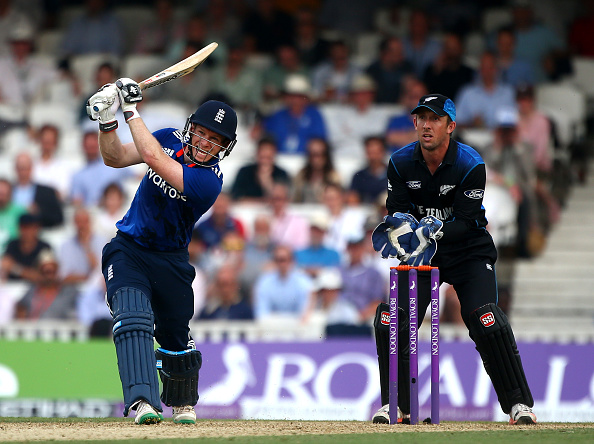How does a player become eligible to play for another country?
26 Min Read


How does a player become eligible to play for another country?: Keppler Wessels, Kevin Pietersen, Dirk Nannes, Eoin Morgan, Luke Ronchi! One might wonder how and why these names are being considered here on a common ground. Some might predicted the trick right, indeed, these are the players who were born on a country, even played cricket at the initial domestic levels for the country and eventually played international cricket from a different national team. Also, there are players who have played international cricket for two countries even.
There are a total of 26 cricketers who have played international cricket for two countries. Kepler Wessels was the first person to play both tests and ODIs for two countries, Australia and South Africa respectively. Earlier, there was no specific rules defined for playing for a particular country and due to the fact that the families of the players migrated to different countries it made them represent different countries as well.
It was no big deal back then but since the rules have changed, and due to the fact that one needs to possess legal citizenship of the country before being allowed to represent the national team, things are not as simple these days.
Recently, there has been a number of amendments made for players to represent different countries at international level.
There are some criteria’s which a player must satisfy in order to play for a different member country, where he wasn’t born.
1. A super-cricketer is qualified to play Representative Super-Cricket for a Member Country of which he is a national or, in cases of non-nationals, in which he was born provided that he has not played Representative Super-Cricket for any other Member Country during the 4 immediately preceding years.
2. A player who has resided for a minimum of six months in a Member Country in each of the 4 immediately preceding years shall be a ‘deemed national’ of that country for the purpose of these rules.
3. A player wishing to represent an Associate or Affiliate Member Country shall be required to satisfy one or more of the following additional Development Criteria:
(i) the player shall have played 50% or more of the scheduled games for his team in a national super-cricket competition in the relevant Associate or Affiliate Member Country in any 3 of the preceding 5 years; or
(ii) the player shall have spent a cumulative total of three months or more during the preceding 5 years in the relevant Associate or Affiliate Member Country coaching, playing or working in the administration or development of super-cricket in that country; or
(iii) the player shall have played Representative Super-Cricket for the relevant Associate or Affiliate Member Country; or
(iv) the player shall have dedicated a reasonable period of time to activities which, in the opinion of the Chairman of the ISCC, constitute a sufficient demonstration of a player’s genuine commitment to the development of super-cricket in the relevant Associate of Affiliate Member Country.
Quick Link – The Acrobatics – Top 10 Fielders in Modern Day Cricket
Well, the above rules clearly state a player’s eligibility criteria. But some might question about Eoin Morgan’s shift from Ireland to England. He used to play for Ireland in 2009 and in the same year he was provisioned to play for England, despite having to wait for a few years. This was due to the fact that Eoin Morgan was a member of the English county club, Middlesex since the age of 16, which permitted him to play for England. Also, he did not play for a full-member nation and a person would be eligible to play for a full member nation if and only if he hasn’t played international cricket for any other full member nation in the span of four years.
Apart from Morgan, players like Ed Joyce and Boyd Rankin have also played for both Ireland and England.
Another instance could be found from Luke Ronchi. Ronchi was part of the Australian team in 2008 but he shifted to New Zealand and resumed his domestic career there. And he was selected for the New Zealand national squad in 2013, after his four years of stay in New Zealand.
Kevin Pietersen, on the other hand, was born in South Africa and debuted to cricketing levels there but shifted to England and started playing county cricket at the age of 20 and thus made it to the English national squad.
List of players who represented two countries in international cricket:
| Player | Countries Represented |
| WE Midwinter | Australia, England |
| WL Murdoch | Australia, England |
| JJ Ferris | Australia England |
| SMJ Woods | Australia, England |
| F Hearne | England, South Africa |
| AE Trott | Australia, England |
| F Mitchell | England, South Africa |
| Nawab of Pataudisnr | England, India |
| Gul Mohammad | India, Pakistan |
| AH Kardar | India, Pakistan |
| Amir Elahi | India, Pakistan |
| SC Guillen | West Indies, New Zealand |
| AJ Traicos | South Africa, Zimbabwe |
| KC Wessels | Australia, South Africa |
| CB Lambert | West Indies, United States of America |
| AC Cummins | West Indies, Canada |
| DR Brown | England, Scotland |
| GM Hamilton | Scotland, England |
| GO Jones | England, Papua New Guinea |
| EC Joyce | England, Ireland |
| EJG Morgan | Ireland, England |
| WB Rankin | Ireland, England |
| L Ronchi | Australia, New Zealand |
| DP Nannes | Netherlands, Australia |
| Roelof van der Merwe | South Africa, Netherlands |
*(All Stats Updated Till 7th September 2016)
Download Our App